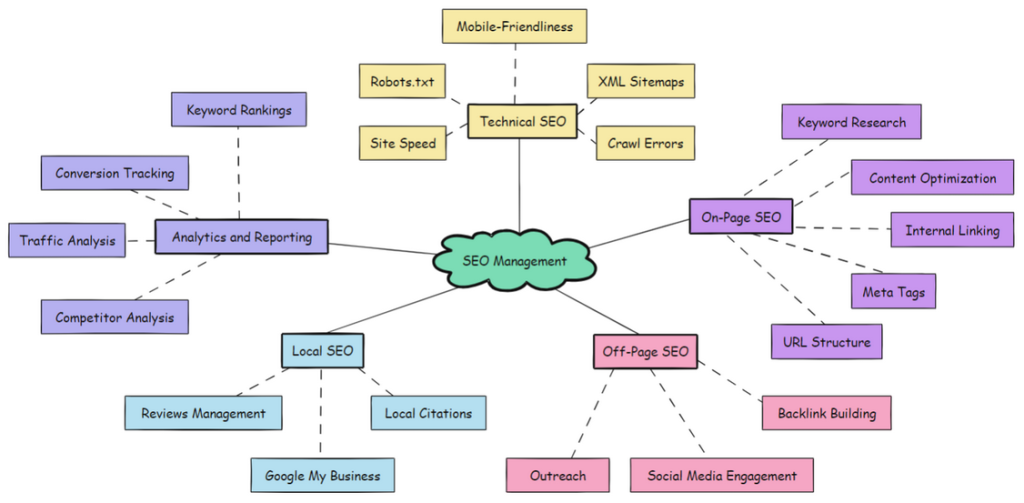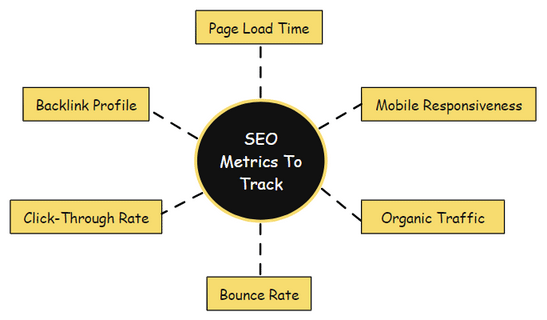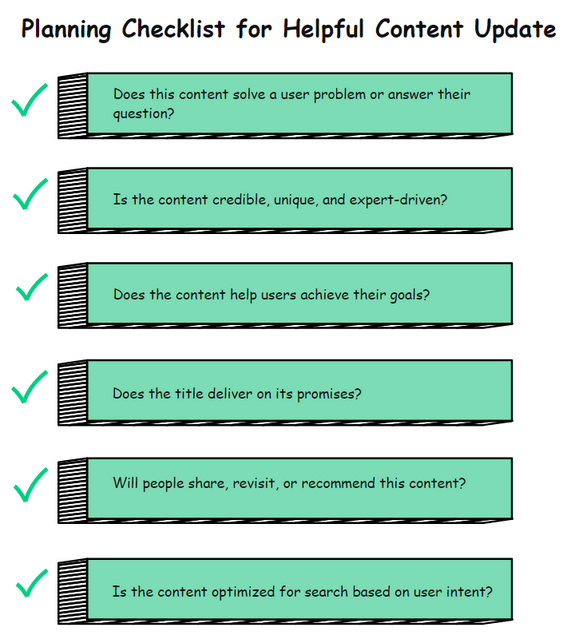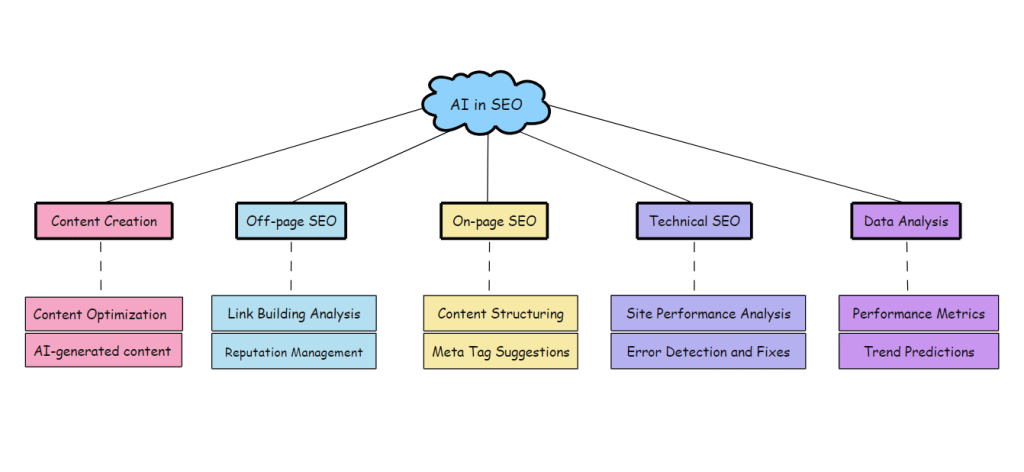SEO management is not just about rankings, it is about driving impactful results that fuel your business growth.
Search Engine Optimization (SEO) management involves organizing, optimizing, and monitoring a website’s online presence to improve its visibility in search engine results. It is the strategic process of aligning website content and technical performance with the search engine algorithms that drive user behavior.
The importance of SEO management in digital marketing cannot be overstated. Studies reveal that 93% of all online experiences begin with a search engine. Additionally, 68% of online activity is driven by organic search results. These numbers highlight how critical it is for businesses to maintain a strong search engine presence to reach potential customers effectively.
This blog aims to provide readers with actionable insights into SEO management. By the end, you will understand how effective SEO strategies can enhance website rankings, attract qualified traffic, and ultimately contribute to business growth. Let us discover how to dominate search rankings and drive targeted traffic to your website.
Understanding SEO Management
SEO management is the process of optimizing a website to enhance its visibility on search engines and improve its ranking on results pages. At its core, SEO management involves a combination of strategies aimed at making a website more relevant to search engine algorithms, which in turn helps drive organic traffic.
It goes beyond just ranking higher. It’s about understanding user intent and providing the most relevant content and experience for your audience. Whether you are a business owner, a marketer, or a beginner, mastering SEO management can significantly boost your online presence.

Components of SEO Management
Effective SEO management involves a combination of strategies that address technical, on-page, and off-page optimization. By integrating these components, you can create a well-rounded approach to improving your website’s visibility and performance in search engines.
On-Page SEO
This focuses on optimizing individual web pages to rank higher and earn more relevant traffic. Key elements include optimizing titles, meta descriptions, headers, and keyword usage within content. It also involves enhancing the user experience by making the website informative, easy to read, and engaging.
According to a report by HubSpot, 75% of users never scroll past the first page of search results. On-page SEO plays a pivotal role in ensuring that your website ranks on that coveted first page.
Off-Page SEO
Off-page SEO focuses on activities that occur outside your website but influence its ranking, such as backlinks from reputable sites, social media engagement, and influencer partnerships. A study by Backlinko found that backlinks remain one of the top ranking factors for SEO.
Technical SEO
This is the behind-the-scenes optimization that ensures a website is structured in a way that search engines can crawl, index, and render it correctly. Technical SEO includes factors like website speed, mobile-friendliness, and proper URL structure. According to Google, mobile searches account for over 60% of global searches, making mobile optimization a key element of technical SEO.
Key Strategies in SEO Management
Effective SEO management requires a multi-faceted approach, with strategies that cover various aspects of website optimization. This section explores the key strategies for managing SEO, including how to leverage tools and develop a comprehensive plan.
Keyword Research and Optimization
Keyword research is the foundation of SEO management. It involves identifying the search terms your target audience uses to find your products, services, or information. Tools like Ahrefs and Ubersuggest help uncover high-value keywords with the potential to drive traffic.
For example, if you’re running an online clothing store, keyword research tools can reveal long-tail keywords like “best eco-friendly clothing brands” or “sustainable fashion for women,” allowing you to create content that directly aligns with user queries.
Once you’ve identified relevant keywords, optimizing them across your website becomes critical. Keyword optimization involves placing these terms strategically in titles, meta descriptions, headings, and throughout the body of your content.
Content Strategy Development
Content is at the heart of SEO management. High-quality, user-focused content that addresses search intent can help your website rank higher in search results. Search intent refers to the goal behind a user’s query, such as informational, transactional, commercial, or navigational.
A well-executed content strategy based on search intent can drive organic traffic. A study by the Content Marketing Institute found that 70% of marketers actively invest in content marketing, with 60% of them seeing positive results.
For example, a user searching “how to fix a leaky faucet” has an informational intent, while “buy faucet repair kit” indicates transactional intent. Understanding this helps create content that meets user expectations.
Step-by-Step Guide to Creating User-Focused Content
- Identify Search Intent: Use tools like Keyword Planner to identify keywords with clear search intent.
- Create Valuable Content: Develop in-depth, informative content that answers common questions, provides solutions, or offers insights based on user queries.
- Optimize for Readability: Break content into easily digestible sections, use bullet points, and incorporate relevant images or videos.
- Use Internal Linking: Link to related articles or pages within your website to encourage deeper engagement and improve site structure.
- Monitor Performance: Use analytic tools to track the performance of your content and adjust accordingly.
Link Building Techniques
- Guest Blogging: Write high-quality articles for reputable websites in your niche to earn backlinks. Guest blogging helps build credibility while driving referral traffic from a targeted audience.
- Broken Link Building: Identify broken links on authoritative sites and suggest your content as a replacement. This strategy provides value to site owners while securing a valuable backlink for you.
- Skyscraper Content: Create content that is more comprehensive, engaging, and up-to-date than existing high-ranking articles. Share it with sites that have linked to similar content to earn backlinks.
- Collaborations with Influencers: Partner with influencers or bloggers in your industry by offering your product or service in exchange for reviews or features, earning backlinks from their trusted platforms.
- Participate in Industry Forums and Q&A Sites: Contribute meaningful answers and insights to niche forums or platforms like Quora and Reddit, including links to your relevant content where appropriate.
- Resource Page Link Building: Reach out to websites with resource pages in your industry and suggest adding your content if it aligns with their audience’s needs.
Technical SEO
Technical SEO ensures that search engines can crawl and index your website properly. Common technical issues like broken links, slow page speeds, and poor mobile optimization can severely impact user experience and search rankings. Fixing these issues is essential for successful SEO management.
Advice for Common Technical Issues:
- Fix Broken Links: Use tools like Screaming Frog to identify and fix broken links. Regularly check for 404 errors and redirect them to relevant pages.
- Improve Page Speed: A slow website can increase bounce rates and negatively affect SEO rankings. According to Google, 53% of mobile users abandon a page that takes longer than 3 seconds to load. Use tools like Google PageSpeed Insights to identify and fix speed issues, such as optimizing image sizes and reducing server response time.
- Mobile Optimization: Since over 60% of global searches are conducted on mobile devices, mobile optimization is crucial. Ensure your website is responsive, meaning it adjusts correctly to any screen size.
- Improve Site Structure: A well-structured website helps search engines crawl your pages more efficiently. Use clear navigation, a logical URL structure, and an XML sitemap to guide search engines.
By addressing these technical SEO issues, businesses can improve their website’s functionality and user experience, which leads to higher search engine rankings.
Measuring SEO Performance

Tracking and analyzing the right metrics is essential for effective SEO management. Performance measurement ensures that efforts are aligned with goals and helps identify areas for improvement.
KPIs for SEO Success
Organic Traffic: Organic traffic measures the number of visitors coming to your site through unpaid search engine results. It is one of the most critical indicators of SEO success. According to BrightEdge, 68% of all online activity begins with a search engine.
Bounce Rate: Bounce rate refers to the percentage of users who leave your website after viewing only one page. A high bounce rate often indicates that the content or user experience does not meet visitor expectations.
Dwell Time: Dwell time is the amount of time a user spends on a page before returning to search results. It serves as an indicator of content quality and relevance. Studies show that pages with higher dwell times are more likely to rank higher on search engines.
The Power of Micro-Goals
Micro-goals are smaller, incremental targets that contribute to overall SEO success. For example, focusing on improving click-through rates (CTR) on underperforming pages can lead to higher rankings and more traffic.
Tools like Google Search Console can help identify pages with high impressions but low CTR. By optimizing meta titles and descriptions, you can make these pages more appealing to users.
Challenges in SEO Management

SEO management is an ongoing process that comes with its share of challenges. From adapting to algorithm updates to managing resources effectively and staying ahead of competitors, businesses must address these hurdles to maintain and improve their search engine rankings. Here’s a closer look at these challenges and actionable strategies to overcome them.
Algorithm Updates
Search engines, particularly Google, frequently update their algorithms to improve user experience and weed out low-quality content. For instance, the 2023 Google Helpful Content Update emphasized prioritizing content written for humans rather than search engines. To stay proactive, businesses should focus on high-quality, user-centric content and regularly audit their websites using trending tools.
According to Moz, Google changes its search algorithm 500-600 times a year, making adaptability a cornerstone of effective SEO management.
Resource Allocation
For small teams or businesses with limited budgets, effective resource allocation is key.
- Leverage Free Tools: Use free SEO tools like Google Analytics for performance tracking, Google Search Console for technical insights, and Keyword Planner for basic keyword research.
- Prioritize Efforts: Focus on high-impact areas such as optimizing existing content and targeting low-competition keywords.
- Outsource Selectively: If expertise is lacking in certain areas, consider outsourcing specific tasks like technical audits or backlink outreach to freelancers or agencies.
Competition Analysis
Competitor benchmarking is essential for staying ahead in crowded markets. By analyzing competitor strategies, businesses can identify gaps and opportunities in their own SEO management efforts.
For example, an online bookstore might discover that competitors rank higher for specific genres or keywords like “best thriller books.” Using tools like SEMrush, they can analyze the competitor’s content, backlink profile, and keyword targeting to refine their own strategy. By creating longer, more in-depth articles on similar topics, the store can improve its rankings and gain 15% more organic traffic in just six months.
Case Studies: Real-World Success with SEO Management
Understanding how SEO management impacts businesses is essential for grasping its practical applications. Here are two case studies that demonstrate how strategic SEO practices can transform visibility, traffic, and conversions.
Case Study 1: Zapier
A productivity automation platform, Zapier, struggled initially with generating organic traffic in a highly competitive SaaS space. Despite offering an innovative solution, their primary challenge was low visibility for automation-related queries and difficulty explaining the use cases for their product to a wider audience.
Solution
- Content-Led SEO Strategy: Zapier focused on creating in-depth content around automation use cases, targeting niche long-tail keywords. For example, instead of generic terms like “workflow automation,” they optimized for phrases like “how to automate email marketing with Zapier.”
- Landing Page Optimization: They developed detailed landing pages for every app integration, showcasing specific workflows. Each page highlighted features and benefits, such as “Connect Slack and Google Sheets.”
- Interactive Tools: By creating calculators and tutorials on “Zap” workflows, Zapier engaged users with personalized content that resonated with their specific needs.
Results
Within a year, Zapier saw a 65% increase in organic traffic, with their integration pages ranking on the first page for numerous app-specific queries. The content-led strategy also resulted in higher user engagement and a 40% boost in sign-ups through organic channels. Their long-tail keyword focus proved instrumental in establishing Zapier as the go-to solution for workflow automation.
Case Study 2: Grammarly
A leading writing assistant tool, Grammarly, faced challenges in penetrating the crowded SaaS market for grammar and writing improvement tools. Competing with free tools and low awareness of premium writing solutions, Grammarly struggled to drive conversions and organic traffic.
Solution
- Freemium Model SEO: Grammarly optimized their landing pages to cater to both free and premium users. They targeted long-tail keywords like “free grammar checker for essays” and “best writing assistant for professionals” to capture traffic at different stages of the user journey.
- Educational Blog Content: They developed blog posts targeting “how-to” and problem-specific keywords like “how to improve writing skills” or “commonly confused words in English.” These posts linked directly to their tool, guiding users seamlessly from education to adoption.
- User Reviews and Testimonials: Grammarly showcased reviews, testimonials, and case studies prominently to build trust and credibility among potential users.
Results
Over six months, Grammarly achieved a 50% increase in organic traffic, with their blog content becoming a major driver of site visits. Their freemium model strategy converted casual users into premium subscribers, boosting their conversion rates by 30%. As a result, Grammarly established itself as a trusted leader in writing assistance tools.
Future Trends in SEO Management

As search behaviors and technologies evolve, SEO management continues to adapt, incorporating new trends and tools to meet user expectations and algorithmic requirements. Businesses that embrace these emerging strategies can gain a competitive edge. Here are three key trends shaping the future of SEO management.
Voice Search Optimization
With the rise of smart speakers and virtual assistants like Alexa, Siri, and Google Assistant, voice search is becoming a dominant mode of query. Research by Statista shows that nearly 40% of internet users use voice search daily. Businesses succeeding in this space focus on optimizing for conversational queries and long-tail keywords.
AI and Automation in SEO
AI-driven tools are transforming how SEO strategies are implemented and monitored. Platforms like BrightEdge and Surfer SEO use machine learning to analyze data and recommend optimization strategies in real-time.
For actionable results:
- Use ChatGPT-based tools to generate high-quality content ideas aligned with user intent.
- Implement AI-powered audit tools like MarketMuse to identify content gaps and prioritize updates.
According to Deloitte, AI adoption in marketing can improve efficiency by up to 30%, making it an invaluable resource for SEO management.
User Experience (UX) as a Ranking Factor
Google’s emphasis on user experience has made metrics like page load time, interactivity, and visual stability critical to rankings. Pages with faster load times and better mobile responsiveness are more likely to retain users and rank higher.
Conclusion
SEO management is a critical component of digital marketing that requires a strategic and data-driven approach to achieve success. Throughout this guide, we have explored actionable strategies like keyword research, content creation based on search intent, and technical enhancements that can deliver measurable results for businesses.
SEO management thrives on consistent execution and a willingness to adapt to evolving trends and algorithms. By prioritizing audience value and maintaining technical excellence, you can ensure long-term visibility and conversions.